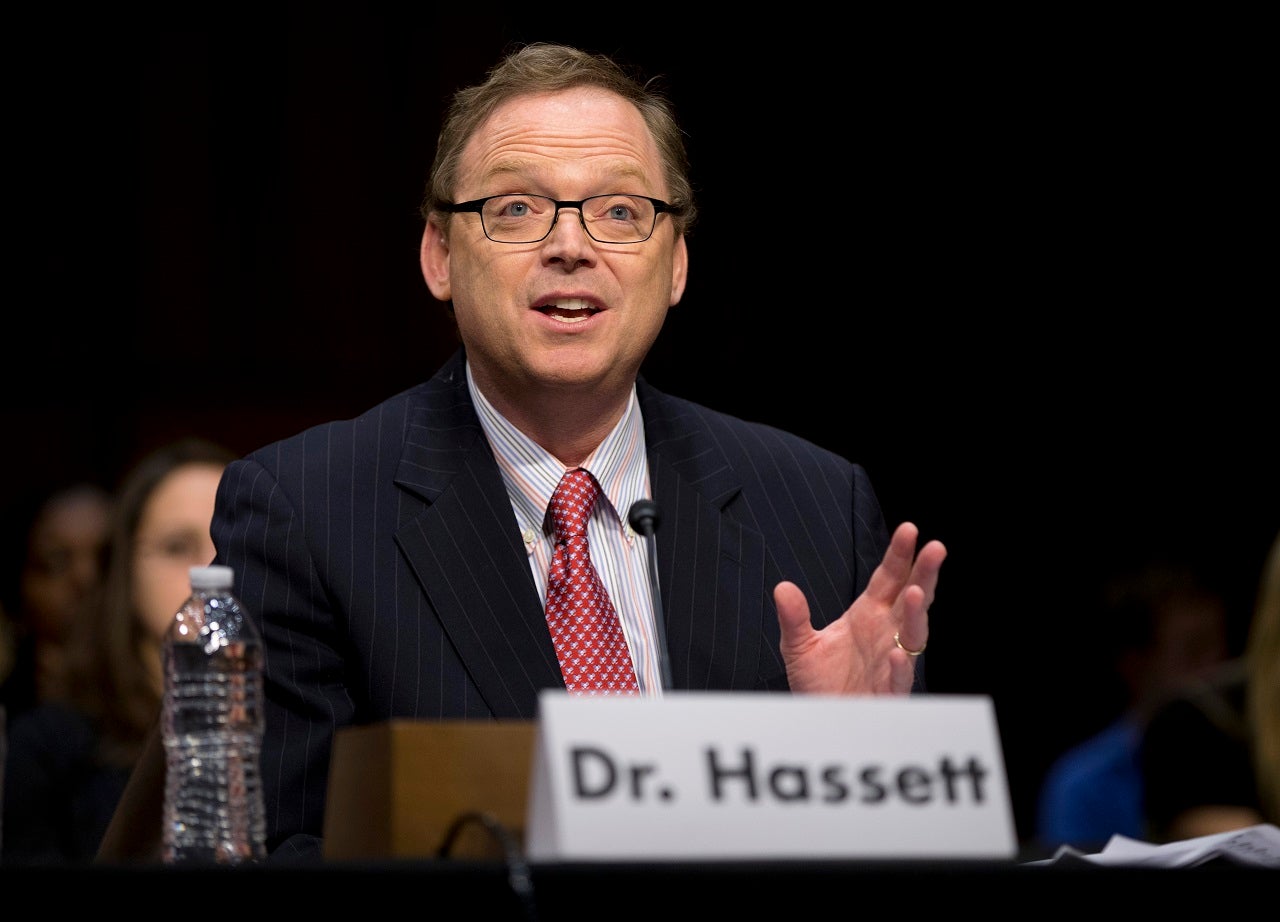Kevin Hassett: The Economist Who Shaped U.S. Policy and Global Economic Conversations

Introduction to Kevin Hassett
When you think about the world of economics and policy shaping in Washington D.C., a few names often come up, and Kevin Hassett is definitely one of them. Known widely for his analytical skills, bold viewpoints, and involvement in U.S. economic policymaking, Kevin Hassett carved out a reputation that blends academia, advisory roles, and direct government service. While he may not be a household name for everyone, within policy circles and among economists, his influence has been significant.
Hassett’s career showcases how economic theory, when combined with practical policymaking, can have a measurable impact on how a nation handles issues such as taxes, labor markets, and corporate investment. Over the years, his work has spanned think tanks, teaching, authorship, and eventually the White House. This unique combination of roles makes him an important figure in understanding not only economics but also how economic thinking directly feeds into government decisions.
Before we dive into the specifics of his contributions, let’s look at the path that led him to the forefront of U.S. economic policy.
Early Life and Academic Background

Kevin Hassett was born on March 20, 1962, and from an early stage, he displayed an affinity for numbers and analytical thinking. Kevin Hassett Economics became his natural calling, as it allowed him to combine mathematical modeling with real-world application. His academic journey took him through some of the most rigorous institutions in the country, where he specialized in economics and developed the foundations of his future career.
He earned his B.A. in economics from Swarthmore College and later pursued a Ph.D. in economics at the University of Pennsylvania, Kevin Hassett one of the most prestigious programs in the United States. Kevin Hassett The training gave him a deep understanding of both macroeconomics and microeconomics, as well as econometrics—tools he would later use to navigate the complexities of policymaking.
While many economists stay within the academic sphere, Kevin Hassett had a broader vision. He wanted to bridge the gap between the theoretical frameworks he studied and the practical world of policymaking. This ambition pushed him toward a career where he could influence not just classrooms but also boardrooms and government offices.
Kevin Hassett at the American Enterprise Institute (AEI)
One of Kevin Hassett most notable professional chapters was his long tenure at the American Enterprise Institute (AEI), a prominent conservative think tank in Washington, D.C. He joined AEI in the late 1990s and quickly established himself as a leading voice in economic analysis and policy recommendations.
At AEI, Hassett served as the Director of Economic Policy Studies, a position that allowed him to shape research agendas and engage directly with policymakers. His work often revolved around tax policy, investment behavior, and economic growth. He co-authored influential research on how tax structures affect business decisions, particularly corporate investment, which later informed debates on U.S. tax reforms.
Perhaps most famously, Hassett co-authored the book Dow 36,000 in 1999, which projected an unprecedented boom in stock market values. While the timing of the prediction didn’t quite pan out due to the dot-com bubble burst, the book sparked wide debate and made Kevin Hassett a more visible figure in both policy and financial media circles. Regardless of whether one agreed with the thesis, the book demonstrated Hassett’s willingness to push bold ideas into mainstream discussion.
Role in the Trump Administration
Hassett’s career took a major leap in 2017 when he was nominated by President Donald Trump to serve as the Chairman of the Council of Economic Advisers (CEA). Confirmed by the Senate, he officially assumed the role in September of that year. This position placed him at the center of U.S. economic policymaking during a particularly turbulent and transformative period.
As CEA Chairman, Hassett played a critical role in shaping and promoting the administration’s economic agenda. Kevin Hassett This included advocating for the Tax Cuts and Jobs Act of 2017, one of the signature legislative accomplishments of the Trump presidency. Hassett strongly believed in the growth potential of lowering corporate tax rates, arguing that it would encourage businesses to reinvest domestically and raise wages for American workers.
His role also extended into trade policy, labor markets, and regulatory reform. While often balancing the competing voices within the administration, Kevin Hassett maintained a reputation for being data-driven and articulate in explaining economic complexities in ways that non-economists could understand. His approachable communication style made him a frequent presence on television, where he defended administration policies with clarity and conviction.
Contributions to Tax Policy and Economic Growth Theories
If there is one area where Hassett left a clear mark, it is tax policy. Throughout his career, he has been a consistent advocate for reforming tax systems to promote investment and growth. His research often highlighted how high corporate tax rates discouraged companies from investing in the U.S., leading to slower job creation and wage growth.
Hassett argued that competitive tax rates not only help corporations but also have ripple effects that benefit average workers. This line of reasoning became central to the Trump administration’s push for corporate tax cuts, and Hassett was often the face of the economic argument behind the policy.
Beyond corporate taxes, he also weighed in on broader growth theories. He championed supply-side economics—the idea that reducing taxes and regulatory burdens stimulates economic activity, which in turn leads to higher overall tax revenue and stronger economic outcomes. While supply-side economics has its critics, Hassett consistently defended its merits with data-driven research and policy proposals.
Communication and Public Engagement
One of Hassett’s unique strengths is his ability to explain complex economic issues in a way that resonates with the public. Not all economists can translate charts, models, and equations into plain English, but Hassett has done so effectively throughout his career.
During his tenure in government, he was a regular presence in press briefings, where he would field tough questions from journalists. His calm demeanor and knack for turning economic jargon into relatable terms made him an effective spokesperson for policies that were often highly technical in nature.
Even outside of government, Hassett has written op-eds, appeared on news programs, and given lectures that bridge the gap between academia and the general public. This skill has been critical in making economic policy debates more accessible to everyday people who might otherwise feel left out of the conversation.
Criticism and Controversies
Like most public figures, Hassett has not been without his critics. His book Dow 36,000 remains a frequent talking point among those who question his long-term forecasting skills. Critics argue that his overly optimistic stock market prediction damaged his credibility. However, Hassett has often countered that bold predictions are part of advancing economic debates, even if they don’t always land perfectly.
Additionally, his staunch support of corporate tax cuts has drawn criticism from economists who argue that the benefits were overstated and disproportionately favored wealthy individuals and corporations. Some critics say that wage growth has not kept pace with corporate gains, challenging the trickle-down argument Hassett has often supported.
Despite the controversies, Hassett’s influence on policymaking is undeniable. Whether one agrees with his viewpoints or not, he has helped shape conversations that remain central to the U.S. economic debate.
Legacy and Continuing Influence
Though Hassett stepped down from his role as CEA Chairman in mid-2019, his impact continues to be felt. He remains engaged in policy discussions, often providing commentary and analysis on economic issues through media outlets and think tank contributions. His expertise in tax policy and economic growth ensures that he remains a go-to voice for understanding the long-term implications of government actions.
Hassett’s legacy is not simply about the positions he held but also about how he brought economic issues to the forefront of national debate. His ability to blend academic rigor with public communication makes him a unique figure in the field. For future economists and policymakers, his career provides an example of how to straddle the worlds of theory and practice effectively.
Conclusion
Kevin Hassett’s journey from academic economist to a key policymaker in Washington is a testament to the importance of economic thought in shaping real-world decisions. Whether through his tenure at AEI, his controversial book, or his role in the Trump administration, Hassett has consistently placed himself at the heart of major debates about taxes, growth, and economic policy.
While not everyone agrees with his positions, his influence is undeniable. He has helped drive conversations about how the U.S. can stay competitive, how workers can benefit from policy shifts, and how economic theory translates into practice. Kevin Hassett is more than just an economist—he is a communicator, a policy shaper, and a figure whose work will continue to be studied and debated for years to come.



